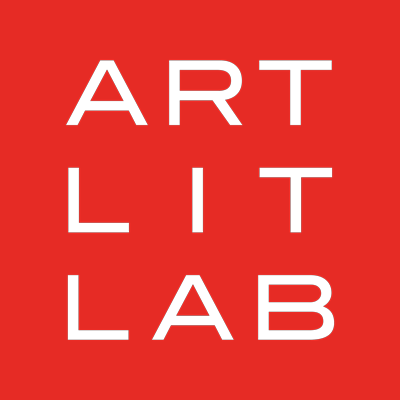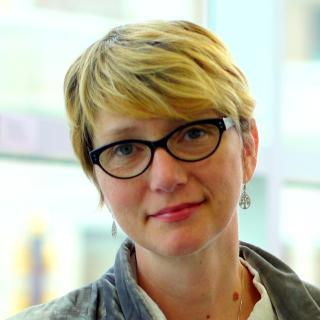First, congratulations on the success of your new book Arena!
Thank you! It was a book that took a long time to write, and by that, I mean it took a long time to realize, as in, piece it together in my mind. I had plenty of poems that circled around my themes—more than double the number I wanted—but I struggled with how to put the book together. It’s a huge relief that it made its way into the world.
In the introduction to your first full-length collection, Marie Howe wrote that she was reading the (then) manuscript out loud to a friend but had to stop because she kept laughing so hard. Most people seem to forget that poetry can be funny, or that it can be funny and good or funny and also deeply humane, complex, and tragic. How did you come to your relationship with humor in poetry? Did you have any particular role models? Has it presented any obstacles for you as a poet? (For instance, I think of having to remind people that Flannery O’Connor was funny, that she meant to be funny, and then they read her in a very different way—I think many people don’t feel they have permission to laugh at literature or poetry.)
Yes, I think humor is so important. For me, it’s partially about self-awareness; if the narrator can see beyond the narrative to its context in the real world, can look at a situation from the angle of the absurd, say, that lodges individual experience in something greater than itself. But also, I see humor as a poetic device, in the same way that approaches to line or sound can be. It’s a particular lens and can be a way to explore an idea from a different angle. An example and inspiration for me would be absurdist writers like Franz Kafka or Daniil Kharms. They taught me that humor can be smart. I want poetry to be approachable, to say what it wants to say rather than hide behind an aesthetic veneer designed to complicate understanding. I also think there is a false idea among many that poetry needs to be serious tonally. It sounds like an oxymoron, but humor can be terribly serious. And we experience a range of emotions in any given experience—say anger, sadness, moments of strange elation when working through a grief—and that range is essential in poetry, too. We don’t walk around having the same feelings every day. Why should a book of poetry be tonally linear?
Sometimes second books can prove to be even more difficult than first books, at least in poetry. What was your experience like writing and publishing this second book? How was it different from the first one?
Yes, it was more difficult. I thought a lot more about structure and cohesion. Also, the subject matter was a lot more difficult for me to wade through, and I was trying to do something really different by incorporating a range of tonal registers. The publisher of my first book didn’t like this one, or at least had a completely different vision of what it should be, so I had to send it out to prizes and open reading periods again. Luckily, magically, it found the perfect home at CSU Poetry center.
You include a number of pictures throughout the book, all in black and white and without captions. Were those pictures always part of your conception of the book? How did the publisher react about your intent to include them? How do you feel they changed the poems and the book?
The photographs became an idea as I was writing the book. It began as I tried to write the emotion of panic, of claustrophobia. But panic is an almost visceral response, something that happens immediately, without warning, and writing is so slow—it takes so long, comparatively, to read a poem. The snapshots were meant to exist as elements that would play off the poems, using cognitive dissonance or amplification to create immediate reactions in the readers. I took all the photographs myself; I even went to a Metallica concert by myself to take photos, which was an experience.
This book is deeply personal but it’s also largely involved in those intersections between public life and private life—almost like it’s creating a graph of those moments in language so we can step back and understand the patterns of those interactions better. Would you say this is a project (or hobby or obsession) or accidental byproduct of your interests as a poet?
I’ve never felt comfortable writing autobiographical poems. To me, it feels self-involved, narcissistic, something that belongs in a diary rather than in the real world. It’s just not interesting to me. But with this book, the underlying narrative was important. I wanted to mine it, and it made sense to explore the personal in the larger context of the public, to contextualize personal grief within public grief. The one doesn’t exist without the other. We don’t just say to ourselves, “Oh, this sad thing has happened to me. I will no longer think about the other things I’m sad or angry about.” And we still have to pick up the kids from school, go grocery shopping, pay the water bill. Life is complicated, especially when negotiating public life with all the elements of a private life percolating in the background.
The book opens with the poem “Presentation.” It’s a prose poem that begins “First I will what I am going to say about loss then I will say it. Later I will repeat what I said so that you will remember the important points when you are doing something else like watering the garden or picking up your kid from school. Probably if you have experienced a deep loss you will already know what I am going to say. If so, feel free to chime in.” There is so much in those first lines, and by the time I got to “If so, feel free to chime in,” I wanted to stop and tell every I knew to start reading the book. There’s a generosity in that moment, a way out of the trap of confessional poetry (which can seem self-involved and even cliche now), that makes a reader sit up and realize there is so much more to these poems, that there is room in them for humor and even for the readers themselves. Were you consciously working to create this space in the poems, or did you find it came naturally?
Humor can be a way to contextualize, or for the narrator not to take themselves too seriously. I was conscious of self-help jargon, the cliché of writing through your feelings, when I was writing that poem. I didn’t want this book to fall into that category. I wanted it to be more self-aware.
This book centers on an attempted suicide by a family member. That is one of the most painful intersections of the private and public that anyone can imagine. Did you find yourself resistant to exploring this in poetry? What sort of struggles did you or your family have around the potential public (and now very public, due to its success) nature of the poems?
I was nervous about exposing my family members, but at the same time I was angry about conventions that encourage this kind of event to remain undiscussed. It was something that rocked my world, yet it was this huge secret. At the same time, the book is about other ideas as well, as you mention above. The narrative thread of the suicide attempts runs through the book, but it’s not the entire sum of the book.
You were part of ALL in its first iteration in New Haven, CT. Can you tell us a little about that?
Yes! It’s given me great pleasure to see how far you’ve come in Madison. In New Haven, we really were just starting to get off the ground. We had a little gallery space for events and shows, and I remember teaching a book-binding class at one point, which was a lot of fun. Jolynne and I and Dianne Bilyak were involved at that point. By the way, Dianne has a great new (funny!) nonfiction book out from Wesleyan called Nothing Special. You should check it out.


